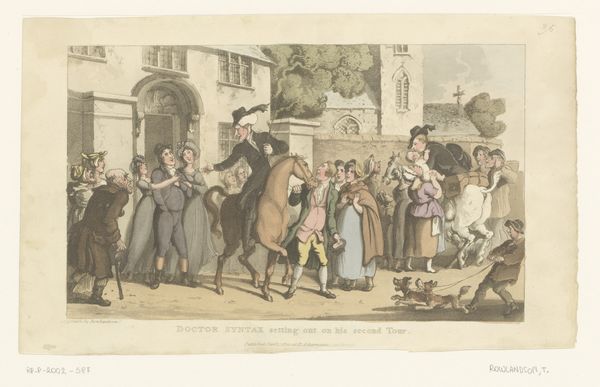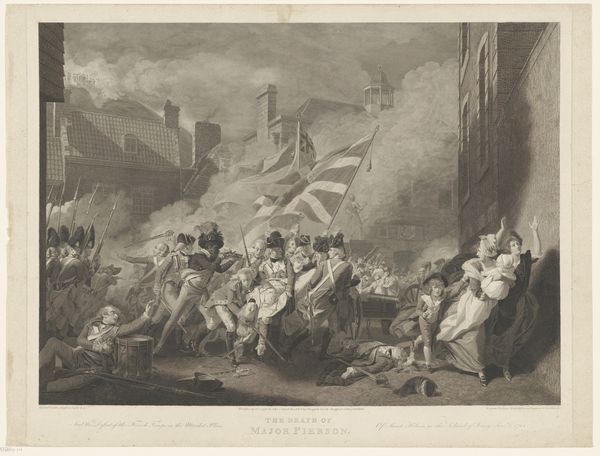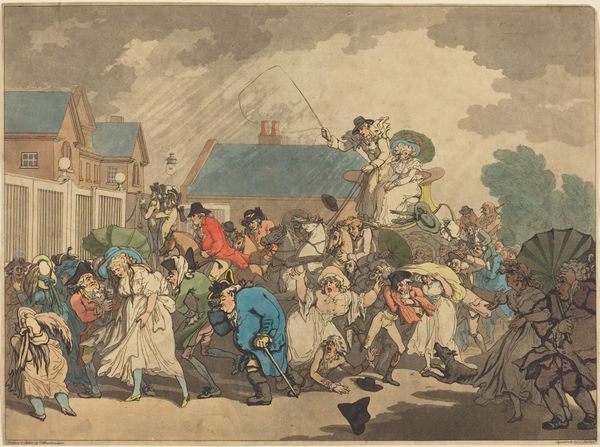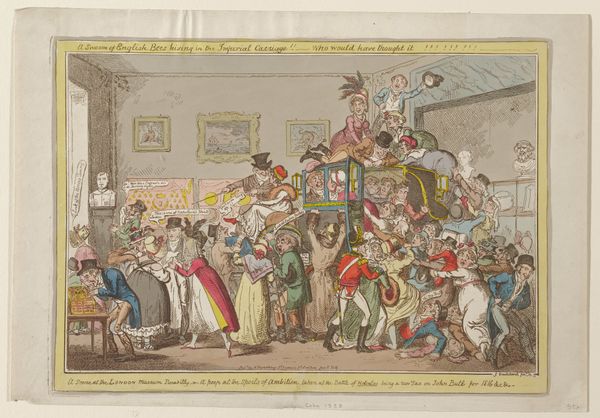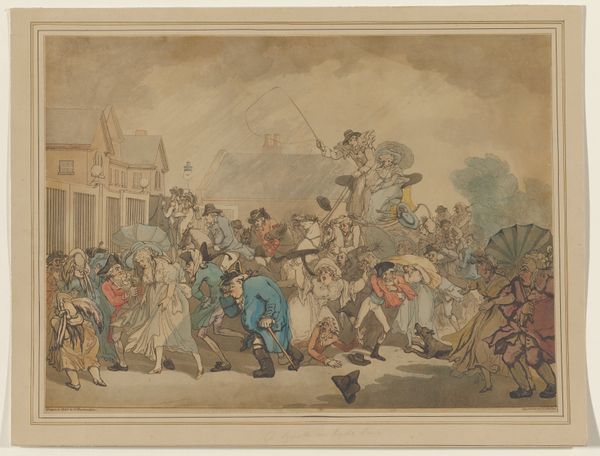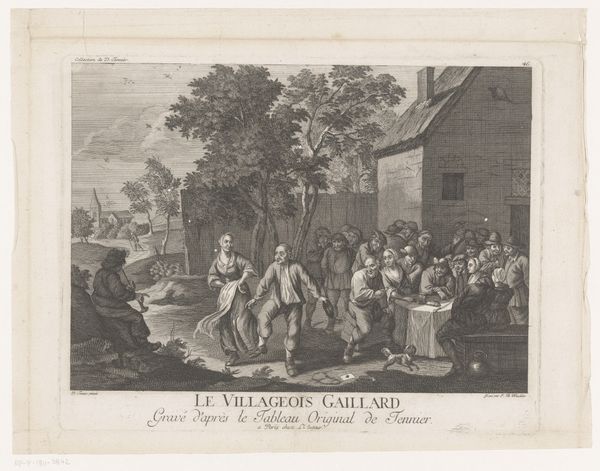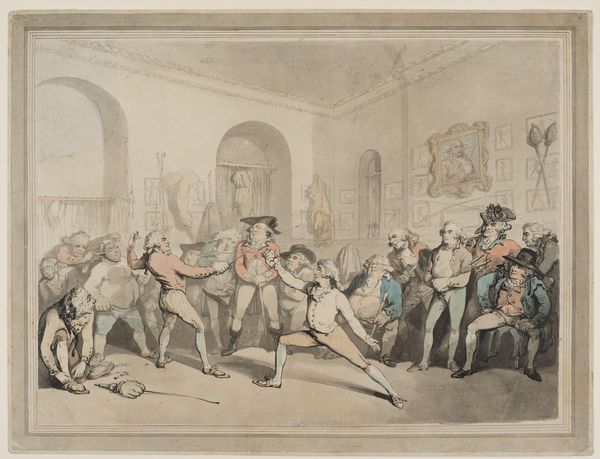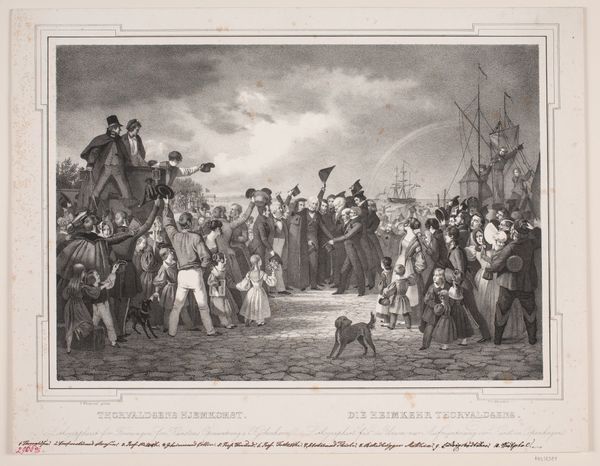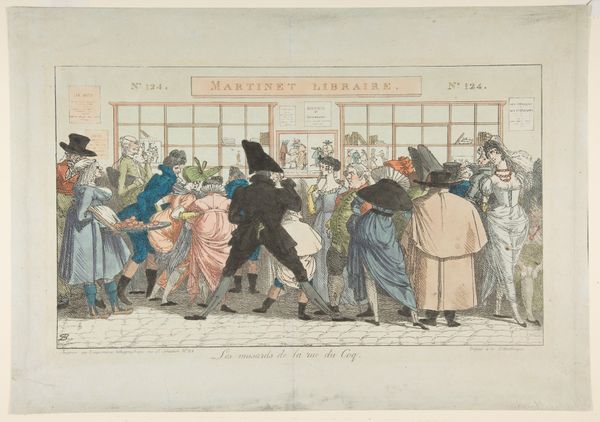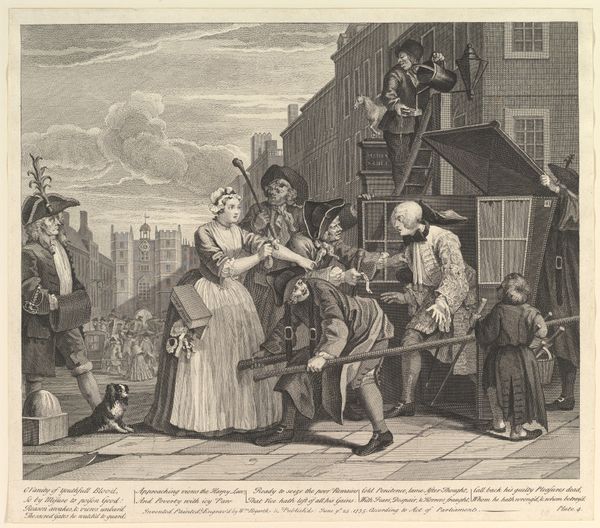
Doctor Syntax rijdt op zijn paard mee met een charivari 1820 - 1827
0:00
0:00
thomasrowlandson
Rijksmuseum
drawing, watercolor
#
drawing
#
narrative-art
#
caricature
#
watercolor
#
romanticism
#
watercolour illustration
#
genre-painting
#
cartoon carciture
Dimensions: height 148 mm, width 241 mm
Copyright: Rijks Museum: Open Domain
Curator: This lively scene before us is a drawing by Thomas Rowlandson, likely completed sometime between 1820 and 1827. The Rijksmuseum is fortunate to have this watercolor among its holdings. Its title is "Doctor Syntax rijdt op zijn paard mee met een charivari" which translates roughly to "Doctor Syntax Riding His Horse with a Skimmington." Editor: Riotous! The composition surges forward with a crowd of figures. There's something wonderfully theatrical about the costuming, but with a distinctly rough edge to the execution. The line work seems so immediate, so gestural. Curator: Indeed, the medium informs much of the work's power. Rowlandson’s skilled use of watercolor allows for both quick execution and subtle blending of color, suggestive of immediacy but also the potential for layered readings. Considering this was intended as an illustration, printed for consumption by a wide audience, the relative cheapness of the medium would have allowed for broader access and replication. Editor: Beyond just the drawing itself, what of this "skimmington" ritual? Clearly the effigies carried aloft – are those stag horns above them? – denote some transgression against community norms, visualized through these somewhat grotesque symbols of derision and shame. I'm fascinated by the masked figure at the center—who are they meant to represent? Curator: "Skimmington" refers to a folk custom intended to publicly humiliate social deviants, often adulterers or those suspected of domestic abuse. The effigies, crude instruments, and boisterous procession would serve as a form of public censure. The means of production would also involve various trades people. Think about it— someone had to make the paper, create the paints and inks, and even physically make the implements seen here. Editor: So, even something as seemingly simple as a watercolour can tell us volumes about social customs and collective memories. I now see a visual record of collective judgment and a potent symbol of public shaming. Curator: Absolutely. And through his mastery of a readily accessible medium, Rowlandson captures the complex societal norms and everyday activities of his era with an ease and accessibility which underscores the artwork's timeless relevance.
Comments
No comments
Be the first to comment and join the conversation on the ultimate creative platform.
